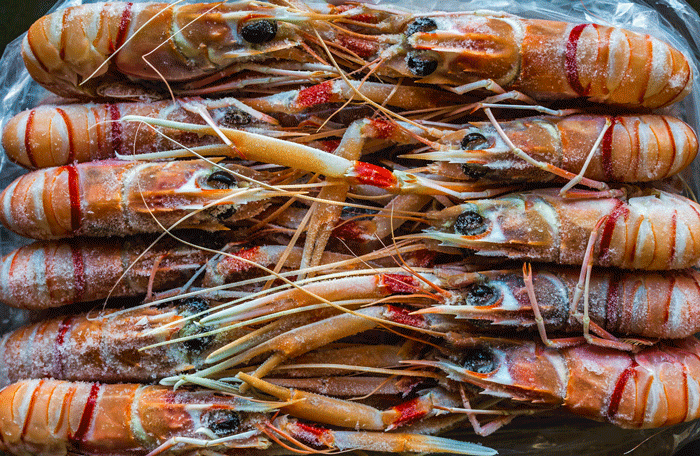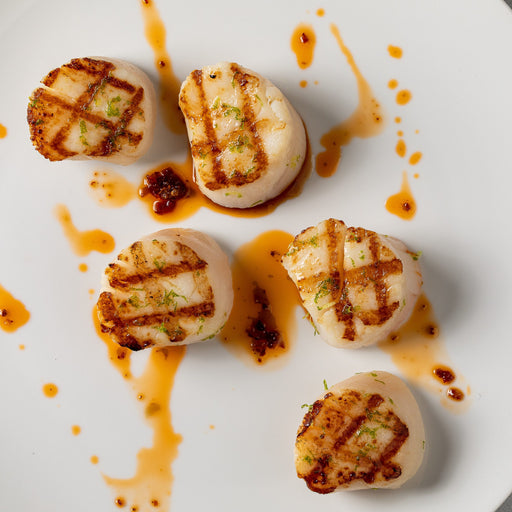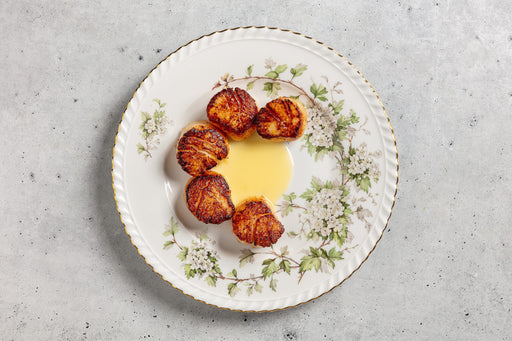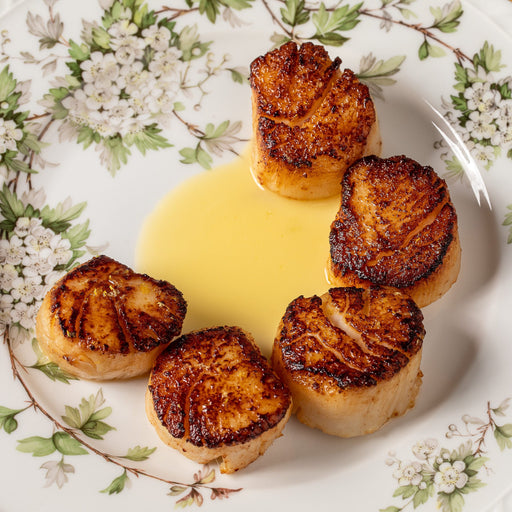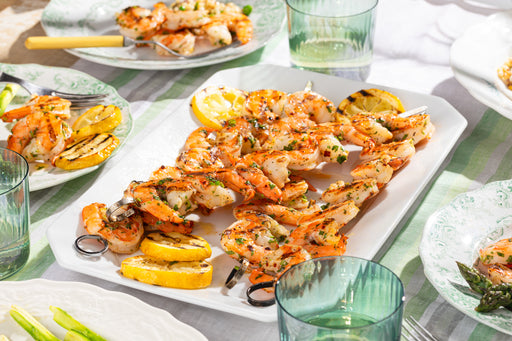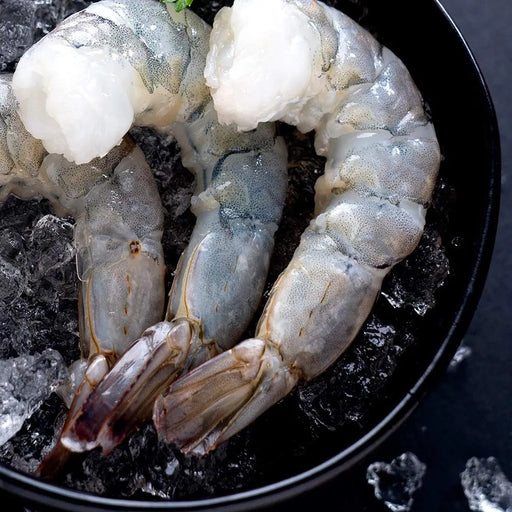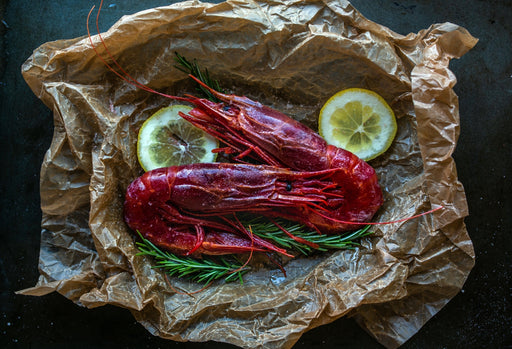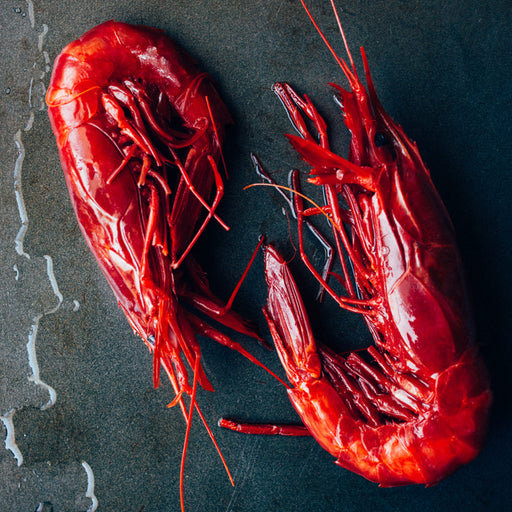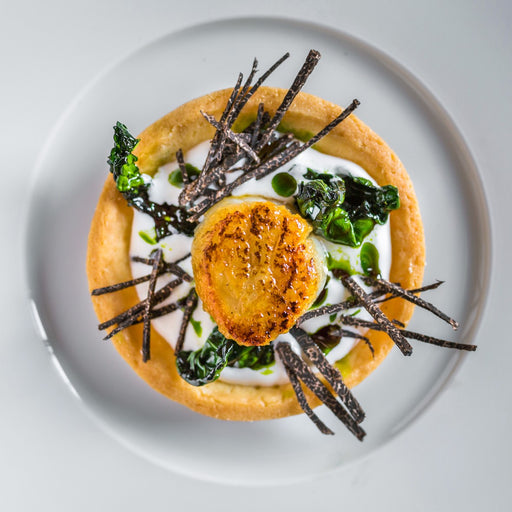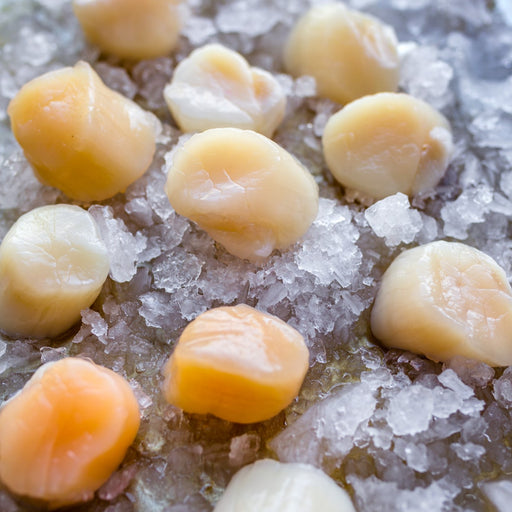Langoustines, often referred to as “Dublin Bay Prawns” or “Norway Lobsters,” are small lobsters from the cold waters of the North Atlantic, known for their delicate texture and sweet flavor. These crustaceans belong to the lobster family but are significantly smaller than their North American counterparts, making them highly prized for their versatility in the kitchen. Their size, texture, and quality combine the best elements of both lobster and shrimp, with a flavor that’s rich like lobster but a bit lighter, offering the flexibility of shrimp in various dishes.
Our langoustines are sourced from the North Sea fisheries off the coast of Norway, where they are efficient hunters, feeding on worms and small fish. This diet imparts a crisp, sweet flavor with a hint of brininess. Langoustines are typically 6-8 inches in length, with a spiny, ridged shell in shades of pinkish-white and reddish-orange. They have long antennae and pincers, which are often as long as their bodies. The meat, found in the tail and claws, is sweet, and when cooked, it turns white.
Due to their diet of live food, langoustines are notably sweeter and have fewer parasites compared to bottom feeders or scavengers, which is one reason why they are so highly regarded. The flavor profile of langoustines makes them an excellent addition to seafood stews, pasta dishes, or even served chilled on a seafood platter or cocktail. Their tails, in particular, offer a unique touch to any chilled seafood presentation.
These small lobsters live along the European coastline, and they tend to grow smaller and sweeter the further north they are found. Langoustines can vary in size depending on their diet and location, but they are generally prized for their delicate texture and sweet flavor, which makes them a standout ingredient in fine dining. Most langoustines available in the U.S. market are frozen due to their fragility, but fresh langoustines are a prized treat when available. The ideal cooking time for langoustines is brief—just 2-3 minutes—whether poached, grilled, or used in a seafood dish, ensuring their sweetness and tenderness remain intact.
Catch Region: Coastal New Zealand and Norway
Seasonality: Year Round – Sold Frozen
Catch Method: Trawl Caught
Yield: 20-25%
Flavor Profile: Mild, sweet, briny
Texture Profile: Firm, crisp
Substitute:
- Shrimp
- Picked Crab Meat
- Maine Lobster Meat

